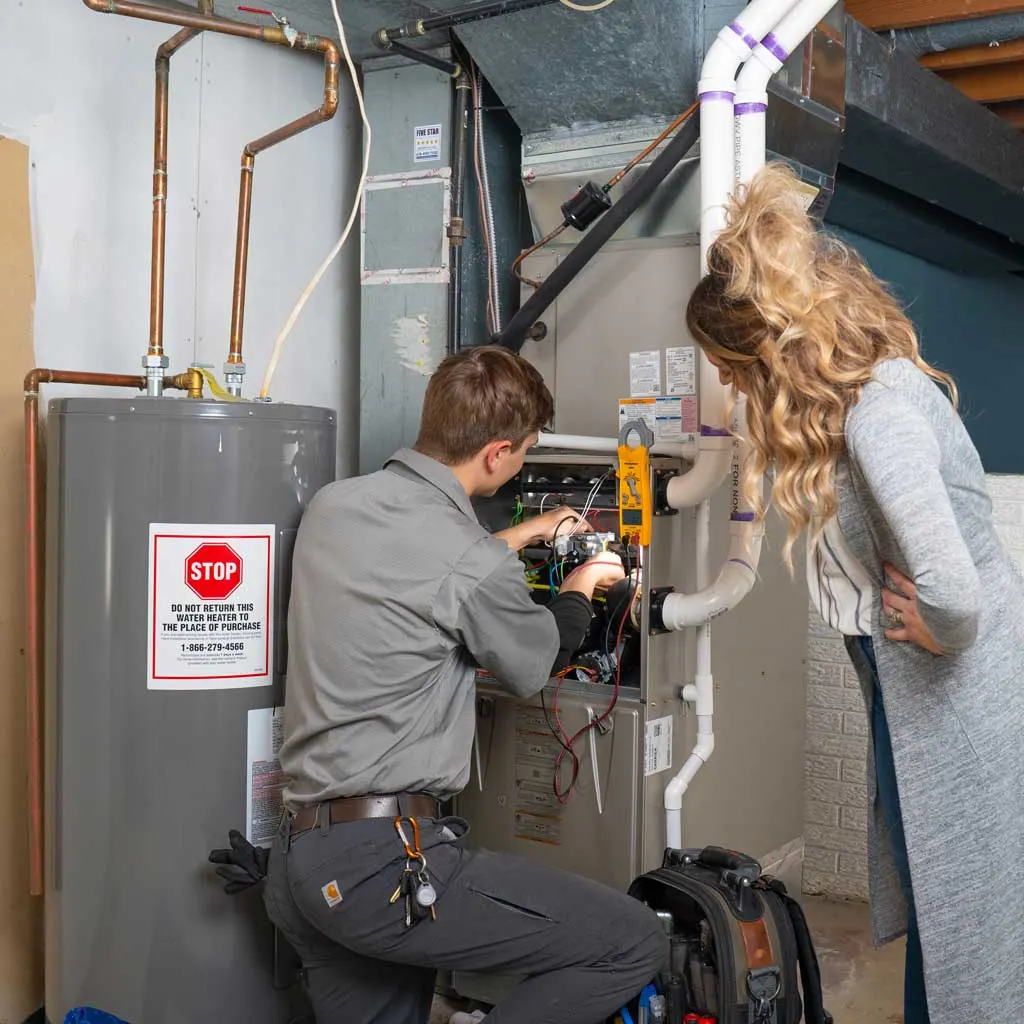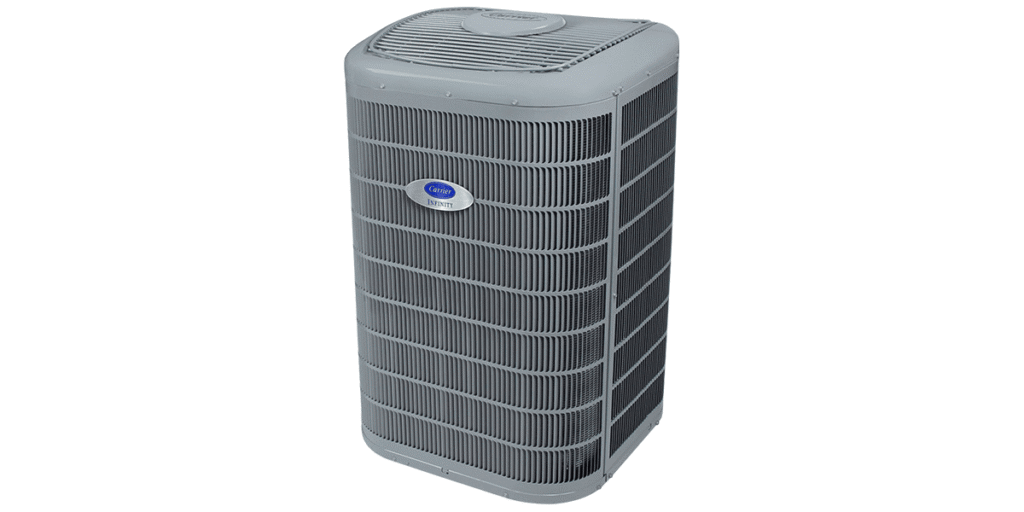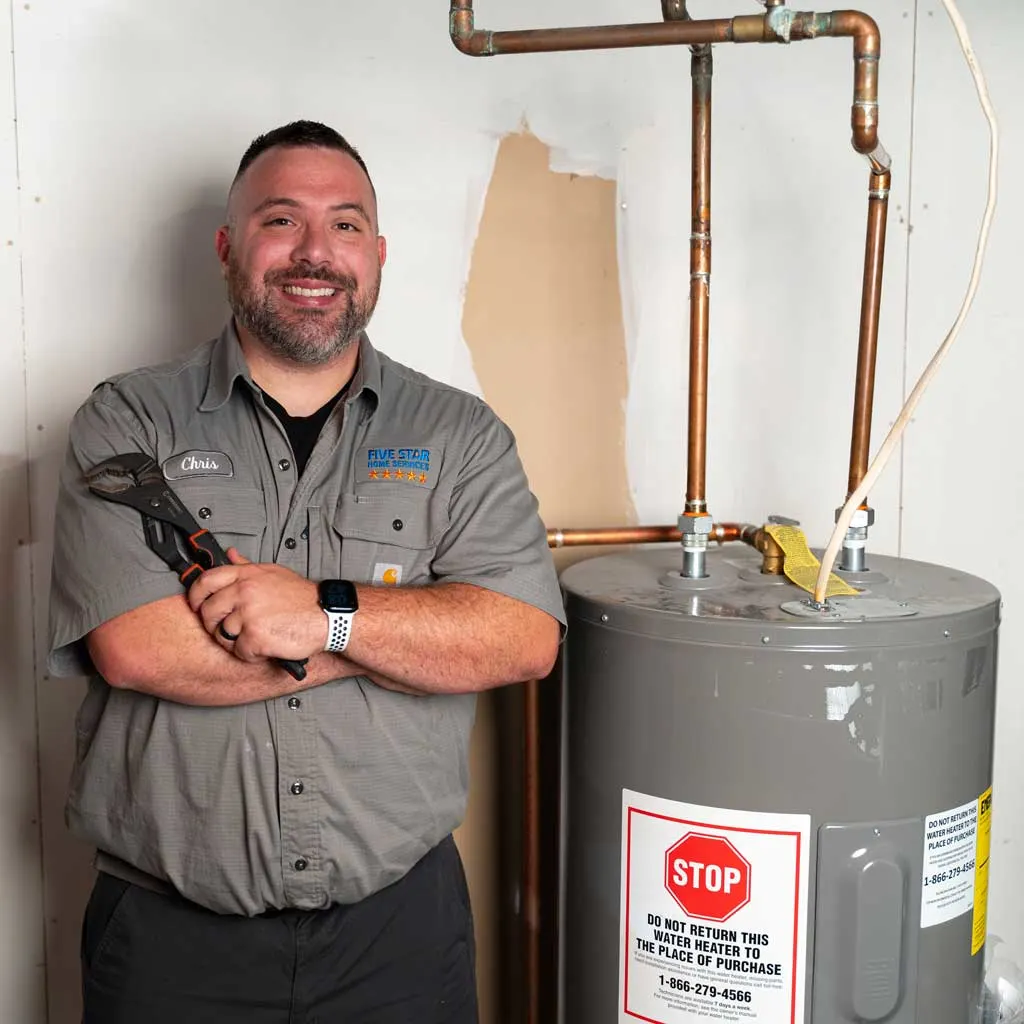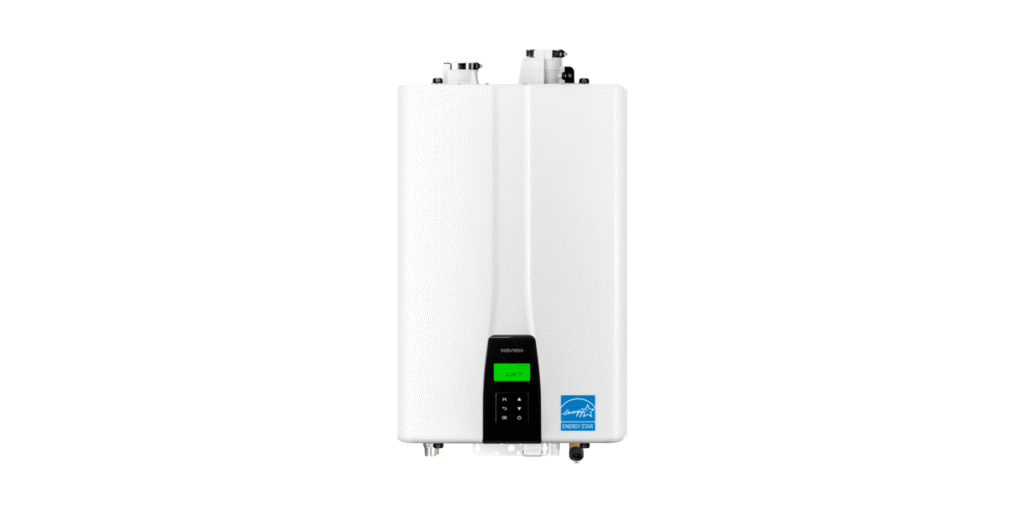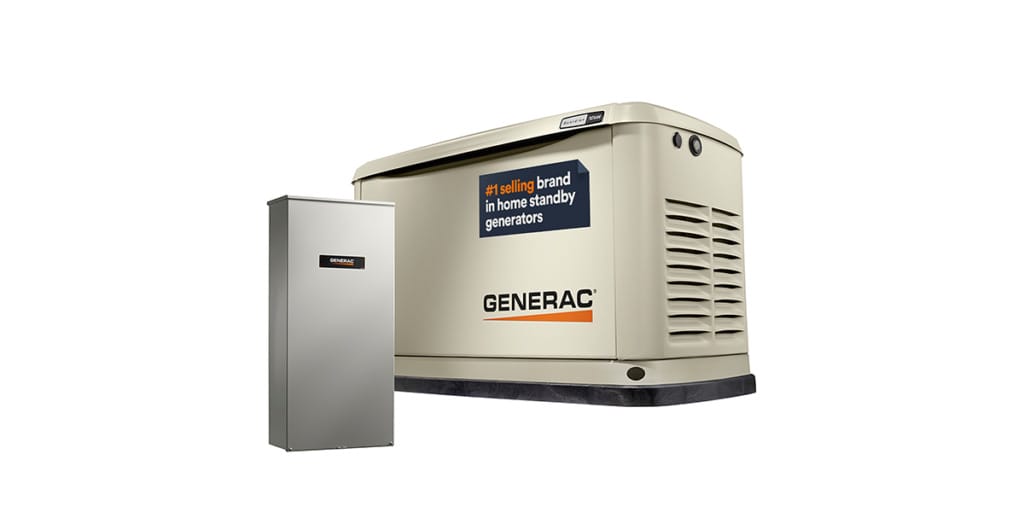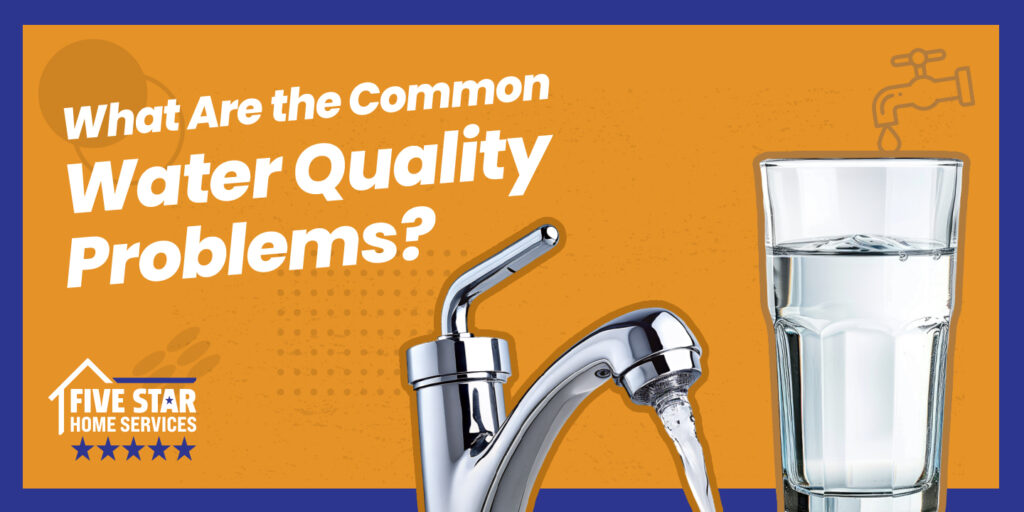“When the well is dry, we’ll know the worth of water.” – Benjamin Franklin
Contaminants, hard water, and aesthetic issues are all common problems associated with residential water quality. Unfortunately, this is a typical battle every homeowner likely faces when it comes to the water quality in their home.
Water is life, but not all water is safe for life.
Just because it flows freely and is accessible, that does not necessarily mean your home’s water is the safest option for you, your family, and your home.
Today, as your local, certified plumber in the heart of the Buckeye state, I’m taking a deeper plunge into the wealth of information about water quality in our areas, focusing on Central and Southwest Ohio.
Let’s dive in.
What’s Really in Your Water?
A Look at Common U.S. Contaminants:
There is a national survey of U.S. drinking water contaminants that reveals widespread exposure to seven major pollutants in American homes. These include arsenic, lead, nitrates, disinfection by-products, PFAS (“forever chemicals”), uranium, and chemicals related to fracking. Yikes!
Doesn’t sound great, right?

Keep in mind, each individual contaminant poses its own unique health risks. Ultimately, doing your own research and knowing what’s in your water isn’t just useful—it’s crucial for making informed choices about water filtration and treatment.
Is There a Water Problem in My Area?
- Ohio residents—especially in Columbus, Dayton, and Cincinnati—face water quality challenges year-round due to our regional geology and infrastructure:
- Hard Water is Common: Columbus water is softened to about 120 ppm (7 grains per gallon) to prevent scaling and corrosion. Much of Ohio has naturally high mineral content, leading to hard water that affects plumbing, appliances, and skin.
- Older Plumbing and Corrosion Risks: Homes built before 1986 often contain lead or copper pipes, which can leach into your water if corrosion occurs. Columbus combats this with zinc orthophosphate treatment, while Dayton advises homeowners to flush taps regularly in older homes.
- Seasonal Impact on Water Quality: Spring and fall often bring heavy rains and agricultural runoff, which can affect private wells and groundwater sources, especially in rural areas.
What Are the Common Water Quality Problems?
This is an obvious no-brainer: Water contamination is always a major concern. So, let’s talk about the top twelve most common contaminants you might find in your water supply:
- Hard Water:
Hard water contains elevated levels of minerals, primarily calcium and magnesium, that aren’t dangerous to drink but can definitely wreak havoc on your home. In fact, over 85% of U.S. households deal with hard water, and in Ohio, average levels hover around 155 mg/L, placing most areas in the “hard” to “very hard” category. Some cities, like Dayton, Ohio, report levels as high as 362 ppm.
These minerals precipitate out of the water to form scale buildup inside pipes and water, using appliances, which reduces performance and shortens lifespan. They also react with soap to create stubborn scum on your sinks, tubs, dishes, and skin (source). Hard water even messes with your laundry, interfering with detergents and increasing usage and costs.
Curious how to treat it? Here’s a helpful overview from the EPA on water hardness and softening.
- High Mineral Content (Calcium & Magnesium):
These minerals accumulate over time, leaving white, chalky deposits (called scale) inside pipes, on showerheads, and around faucets. This buildup reduces water pressure, shortens appliance lifespan, and increases energy use, especially in water heaters.
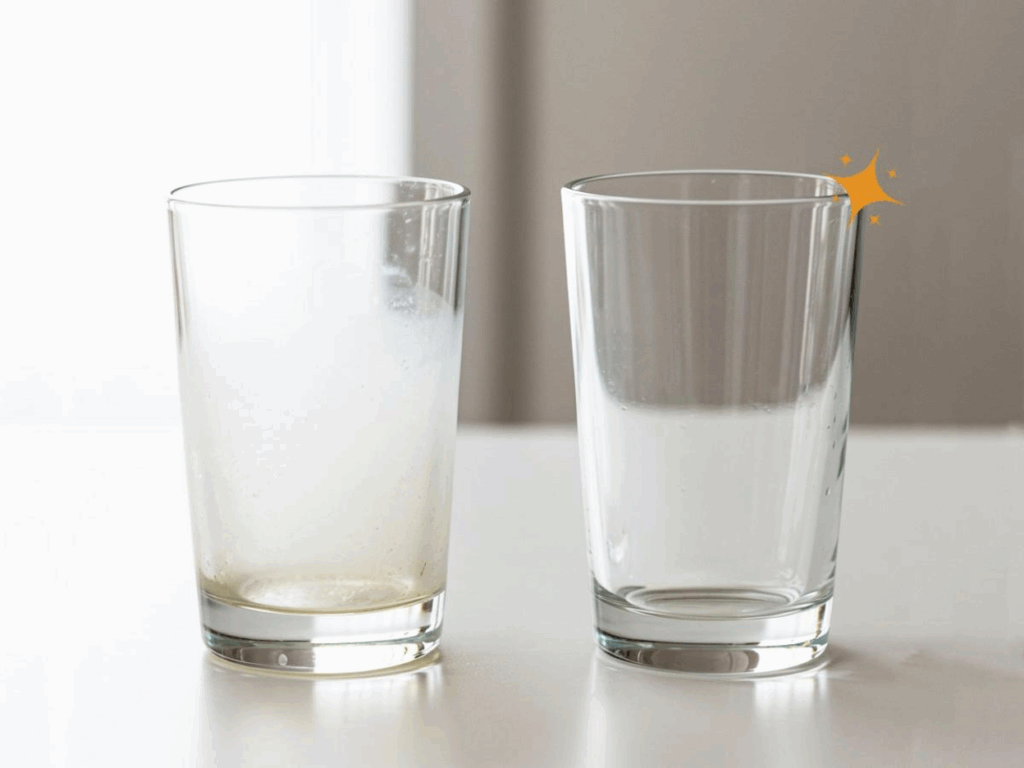
- Soap Scum:
It doesn’t stop there. Have you ever noticed how when water interacts with soap, a sticky residue starts to form and clings to sinks, tubs, and tiles? This happens when the calcium and magnesium ions in your water come into contact with the soap. As a result, this soap scum residue makes cleaning a constant battle and can also irritate your skin by preventing soap from rinsing off properly.
- Lead:
- Lead can seep into your water supply through old pipes and plumbing fixtures. It is especially harmful to children and can lead to developmental issues. If you have older lead pipes, please give us a call. We’d love to help get your home up to par.
- Lead in your water leads to scale buildup on pipes and appliances, dry skin, spots on dishes, and reduced water heater efficiency.
- Additionally, lead can enter drinking water when old pipes, solder, or plumbing fixtures corrode, especially in homes built before 1986. This leaching is more likely when water is acidic or has low mineral content, allowing lead to dissolve into the supply unnoticed.
- Furthermore, it is common for lead to be found in the water of older homes with corroded plumbing. Bear in mind that is especially dangerous for children and pregnant women due to neurological effects.
- Chlorine:
- Chlorine is yet another component often found in our water. It is often used to disinfect water but unfortunately can also pose many health risks. Long-term exposure to high chlorine levels can cause respiratory problems and other health issues.
- Disinfection By-products: Chlorine is used to disinfect city water, but it can leave behind a strong taste and odor. More importantly, it can react with organic material to form by-products like trihalomethanes (THMs), which have been linked to respiratory issues, reproductive problems, and certain cancers with long-term exposure (NIH study). A quality carbon filter can help reduce these risks effectively.
Still skeptical? This past year we helped a local influencer and her family whose water content had the same amount of chlorine as a swimming pool! Sounds crazy, right? However, it’s one hundred percent true. You can check out what Jordan Posner of Foodfest Media had to say here. With their water filtration system installed, today, they now enjoy safer, softer water for all their home water quality needs.
A post shared by Jordan Posner | Cbus Food Content Creator (@midwest_foodfest)
- Other Harmful Chemicals & Heavy Metals in Drinking Water
- Clean water is essential to health—but, it’s not always guaranteed. Pesticides, industrial solvents, and chemical runoff can make their way into your water supply, especially in areas near agriculture or manufacturing. These contaminants can pose serious health risks, ranging from gastrointestinal distress to long-term issues like reproductive problems, neurological disorders, and even cancer. That’s why we always say: Water is life, and clean water is everything.
- Heavy Metals are another major concern. These naturally occurring or human-released elements can accumulate in the body over time and cause serious harm. Common examples include:
- Nitrates – Often from fertilizer runoff in rural areas, nitrates can contaminate groundwater. High levels are especially dangerous for infants and may cause “blue baby syndrome,” a potentially fatal condition.
- Arsenic, Uranium, and Mercury – Found naturally in certain soils or introduced through industrial activity, these metals are linked to cancer, kidney damage, and developmental issues in children.
This is why installing a home water treatment system can help reduce or eliminate these risks, ensuring peace of mind with every glass you pour.
- PFAS: The “Forever Chemicals” in Your Water
- Moving on to some of the most alarming emerging contaminants in drinking water are PFAS (per-and polyfluoroalkyl substances), often dubbed “forever chemicals” due to their extreme persistence in the environment and the human body. These synthetic compounds are found in everything from firefighting foam and stain—resistant fabrics to nonstick cookware and even fast-food wrappers.
- Once in your water supply, PFAS are incredibly difficult to filter out and can build up over time.
- Microbial Contaminants:
Parasites like Giardia and Cryptosporidium can contaminate water through runoff or poorly maintained wells. They’re chlorine-resistant and may cause gastrointestinal illness, especially in vulnerable individuals. Advanced filtration can help protect your household.
If all that wasn’t scary enough, we haven’t even touched on some of the nastier stuff yet. Phew! We’re only a little over halfway through. Microbial contaminants such as E. coli and other bacteria can enter your water supply through sewage overflows or agricultural runoff. Keep in mind that these organisms can cause gastrointestinal illnesses and other severe health issues.
Note: Microbial risks are often worsened by corrosion in plumbing systems, which can cause lead and copper to leach into your drinking water, especially in older homes with outdated pipes. For details on how corrosion releases these metals and the federal rules designed to curb it, check out the EPA’s overview on lead in drinking water.
- Bacteria and Microorganisms
- Even treated water isn’t always immune to microbial contamination. Coliform bacteria—a group that includes E. coli—are often found in private wells or aging municipal systems, especially after flooding or plumbing damage. These bacteria aren’t always harmful themselves, but their presence signals that disease-causing organisms could also be in the water.
- Another concern is biofilm, a slimy layer of bacteria that can build up inside pipes and water tanks. While often invisible, these films can harbor harmful pathogens and are especially dangerous for people with weakened immune systems. Because of this, regular testing and disinfection, especially in homes with private wells, is essential to keeping drinking water safe.
- Pipe Corrosion
- Acidic or Low-pH Water: Can erode pipes, leaching heavy metals like lead and copper into your water—often tied to blue—green staining and metallic tastes.
- Sediment: Dirt, sand, and rust can make water appear cloudy and may damage appliances over time.
Featured Series: Water Heater Buying Guide →
- Aesthetic Issues & Odors
Even if your water is considered “safe” by regulatory standards, it might not always look, taste, or smell appealing. These aesthetic concerns can signal deeper issues and definitely affect your everyday comfort and routines.
- Unpleasant Odor and Taste: One of the most common culprits is hydrogen sulfide gas, which creates that distinctive “rotten egg” smell. Other times, chlorine used in disinfection or bacterial activity can give water a chemical or musty taste and odor. Even hard water minerals can contribute to off—putting flavors—making everything from drinking to cooking a less-than-pleasant experience.
- Discoloration: Water that appears cloudy, yellow, or rusty often results from aging pipes or sediment buildup. While not always harmful, this can stain sinks, tubs, and laundry, and make your water look anything but fresh, especially in bathrooms and kitchens where it matters most.
Now, we know these aesthetic changes may seem minor, but they can point to underlying problems in your plumbing or water source. So, if you notice persistent issues, I highly recommend investigating further or calling a professional.
- Staining on Fixtures and Laundry
- Iron & Manganese: These naturally occurring metals can cause orange, brown, or black stains on toilets, sinks, laundry, and inside pipes.
- Fixtures: As noted, hard water and iron can cause unsightly stains on sinks, tubs, and faucets.
- Laundry: High mineral content in your water can cause stains on your clothes, making them look dingy and rough.
Whether you are dealing with contaminants, hard water, or aesthetic issues in your water, there is a wide range of water quality solutions available to address these challenges. That’s where we come into the picture! From my experience on the field as a professional plumber over the years, I recommend to consider investing in a good water filtration system or consulting one of our local water quality experts to improve your home’s water.
Who Treats Water Quality Near Me?
Worried about what’s in your water? We got you.
Did you know you can call Five Star Home Services for a free water quality evaluation? We make water quality testing simple, accurate, and stress-free. Our expert team will conduct thorough testing to uncover hidden contaminants in your water supply, allowing you to protect your family and enjoy true peace of mind.
When Should You Call a Professional Plumber?
While DIY tests can reveal surface—level issues, certain water problems signal it’s time to bring in a professional. You should watch out for:
- Persistent discoloration (brown, yellow, or cloudy water)
- Unusual odors like rotten eggs, chlorine, or metallic scents
- Visible scale buildup or constant soap scum
- Homes with older plumbing, especially lead or copper pipes
- Microbial contamination, such as E. coli or Giardia
- Private well water that hasn’t been tested in the past year

These 12 common water quality problems are all red flags that could point to serious health or plumbing risks. When in doubt, call Five Star Home Services. Our licensed experts can test, treat, and restore your water to safe, clean standards. Act now and take the first step towards a safer water supply for your home or business.
In the long run, we all secure a healthier, safer future by working together to improve water quality. As we said, don’t just take our word for it; see what our thousands of other satisfied customers who have experienced Five Star’s exceptional services have to say.
You deserve high quality water and the Five Star treatment; it might just be the right time to make a splash with true water quality excellence! You can call us today at (833) 405-8009 and trust in our master plumbers to deliver premium water treatment solutions that stand the test of time.
Remember, clean water isn’t just a necessity. It’s your right and way of life!
FAQs
- What are the signs of hard water?
Look for white, chalky buildup on faucets or showerheads, soap that won’t lather, stiff laundry, dry skin, and spots on dishes or glassware.
- How does pipe corrosion affect water quality?
Corroded pipes—especially older ones made of lead or copper—can leach harmful metals into your water. This may cause metallic taste, discoloration, and health risks, particularly for children and pregnant women.
- When should I get a professional water test?
Schedule a professional test if you notice persistent discoloration, odd odors, unexplained health symptoms, or if you use a private well or live in a home built before 1986.



